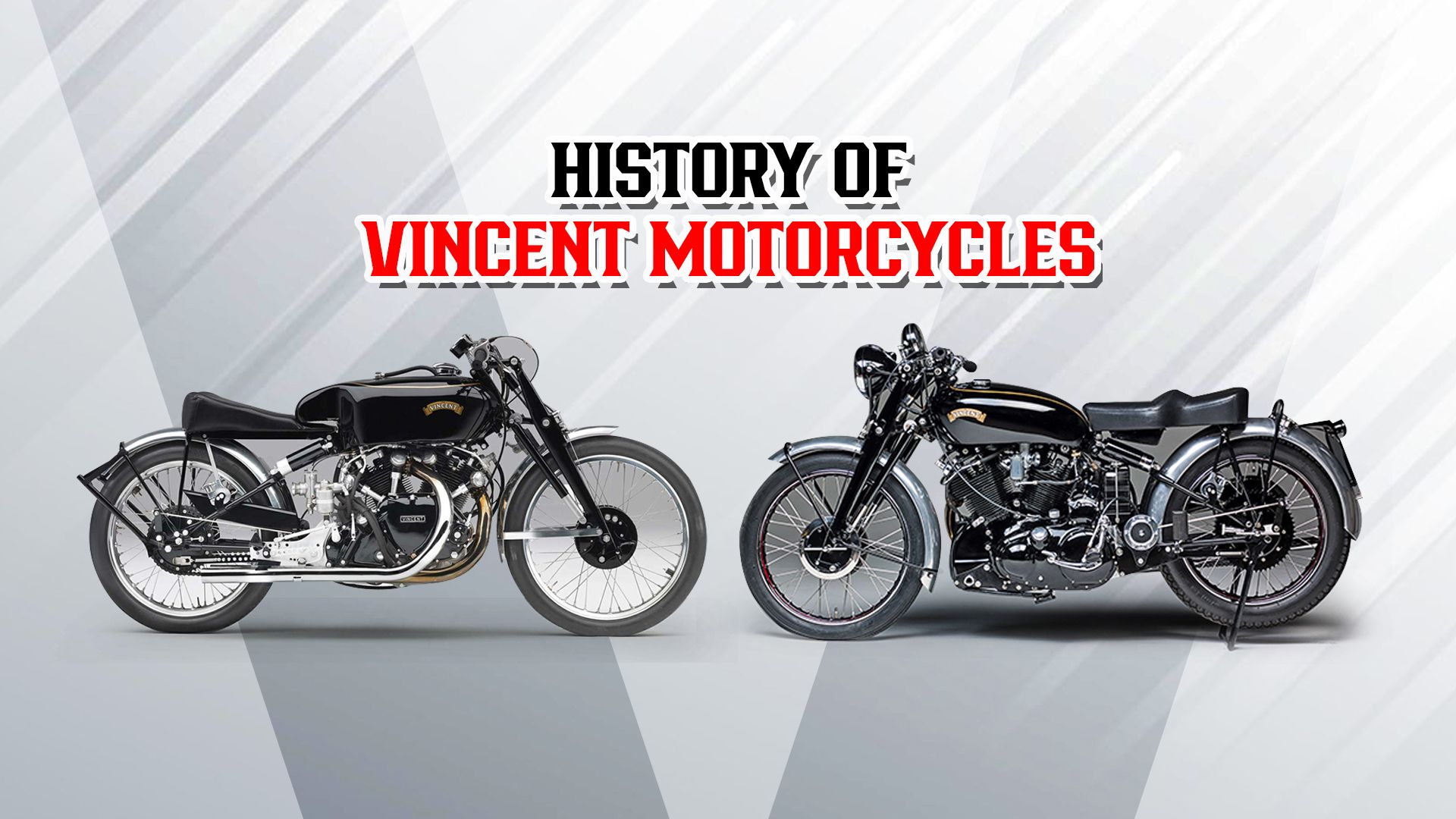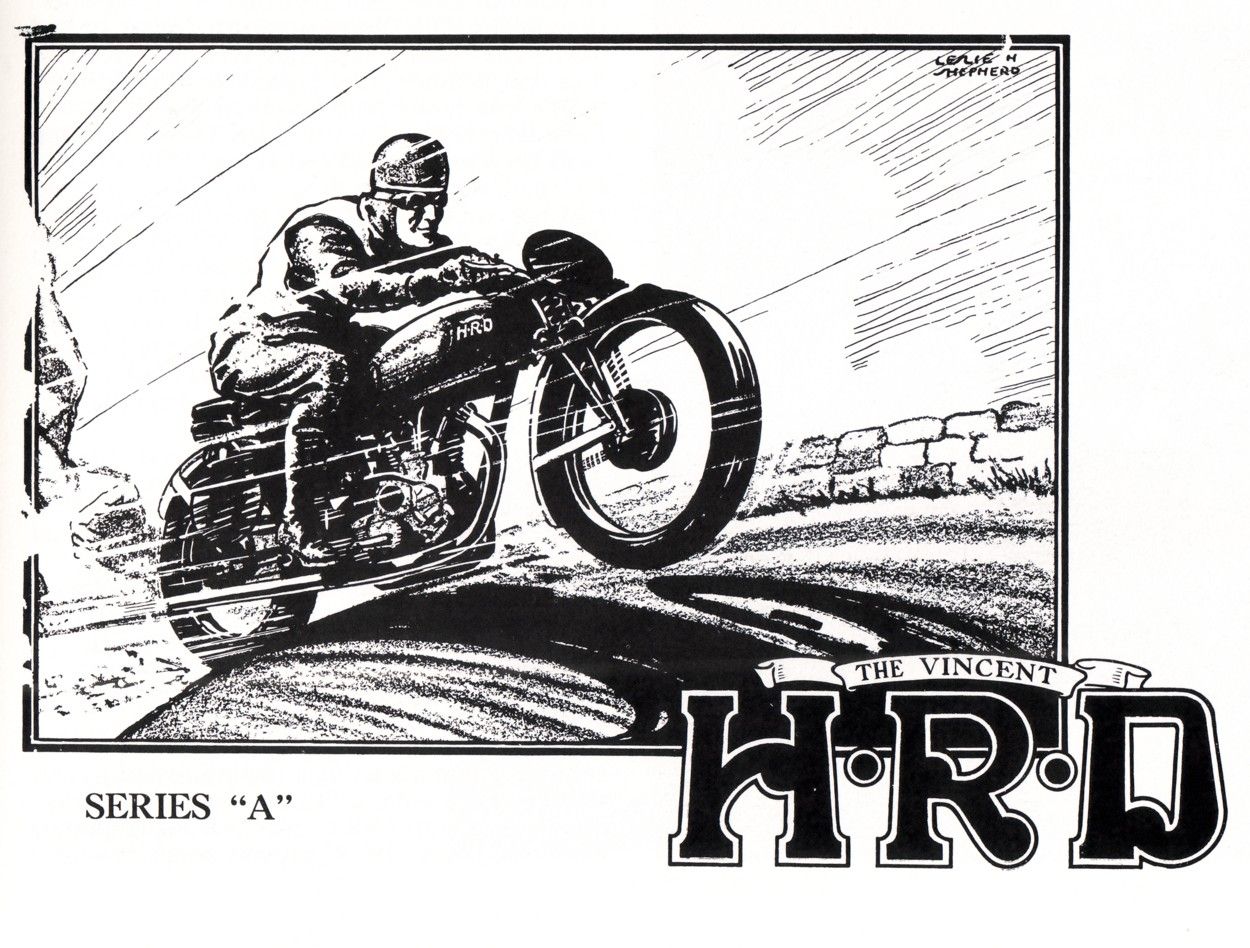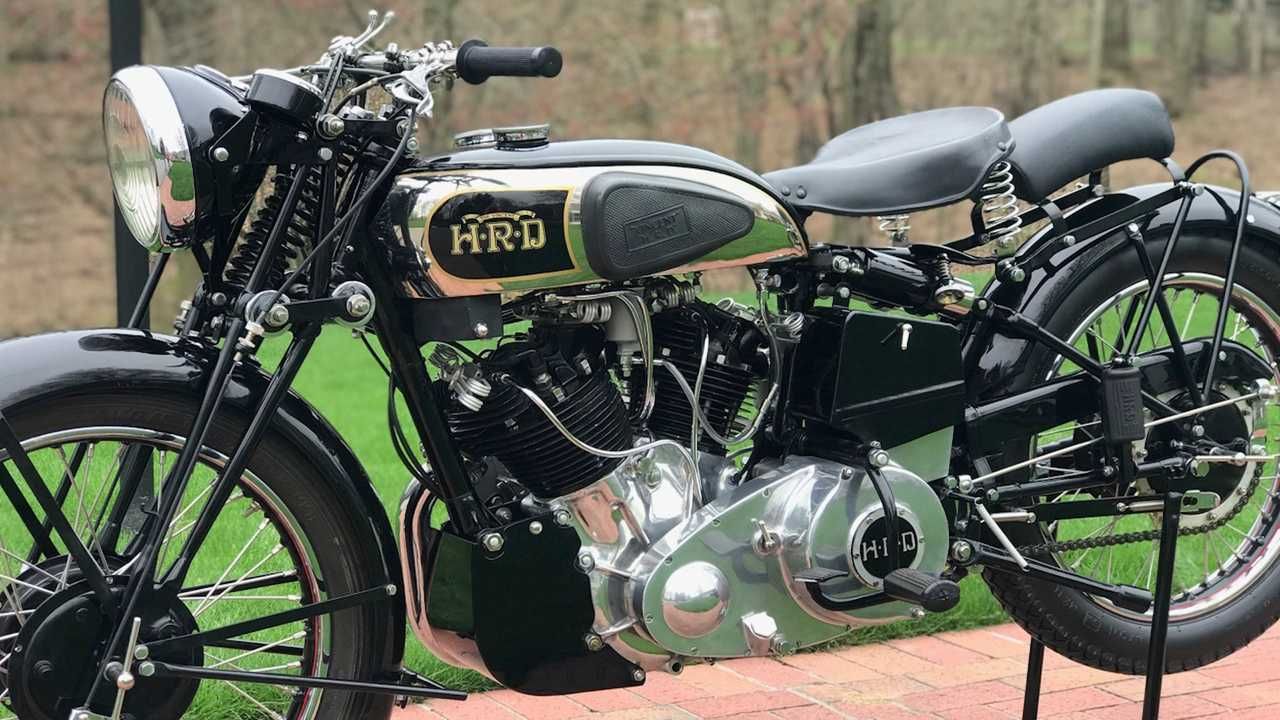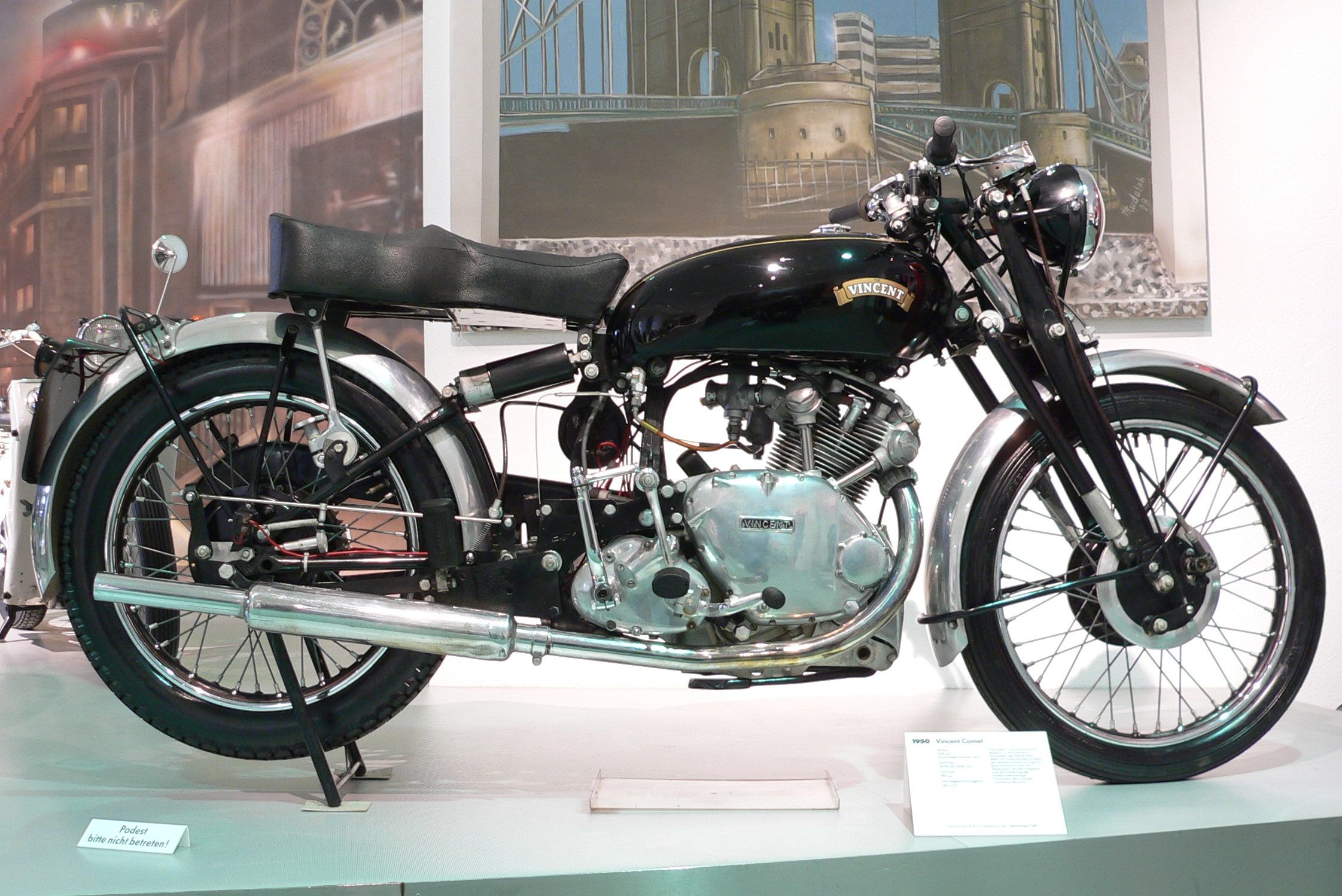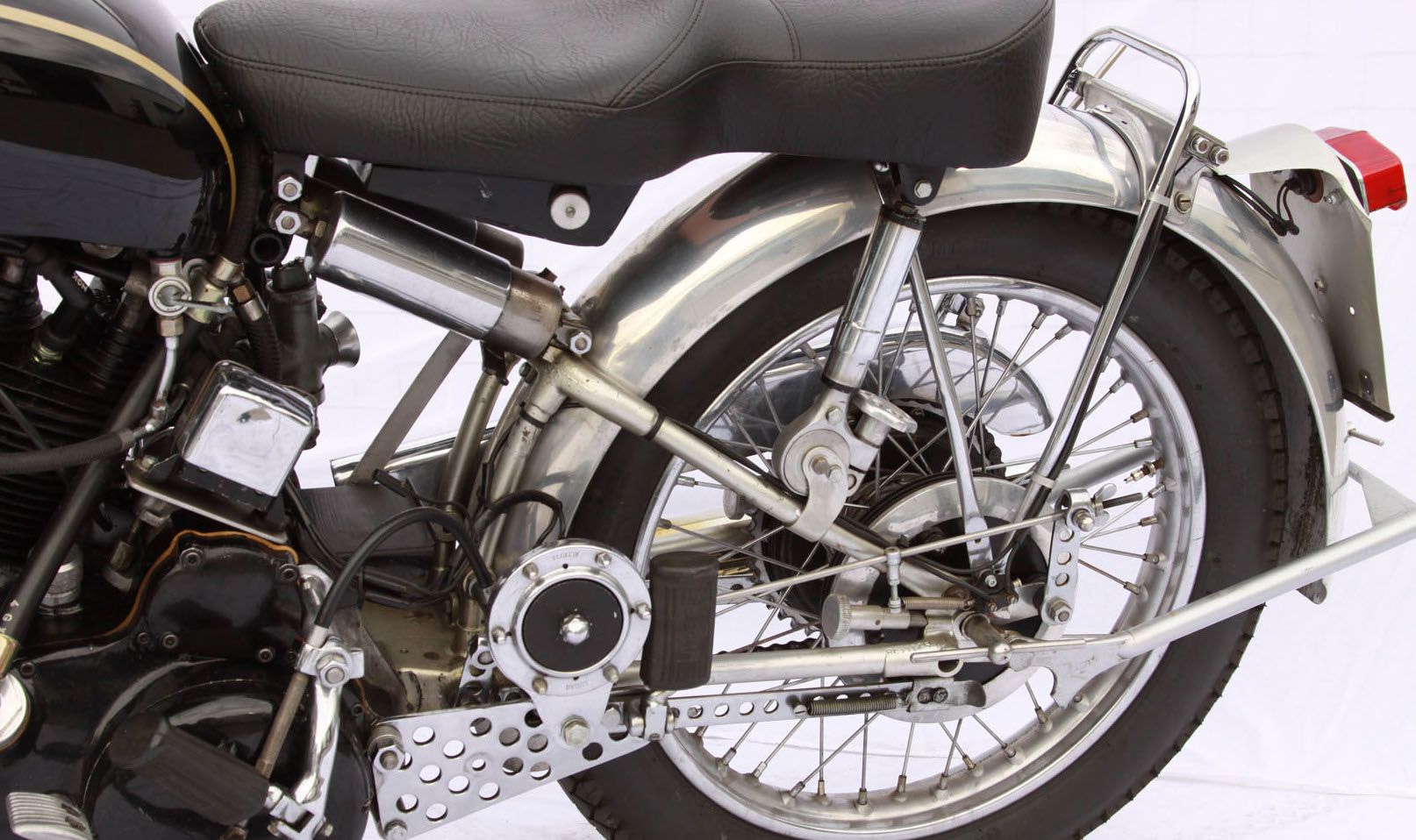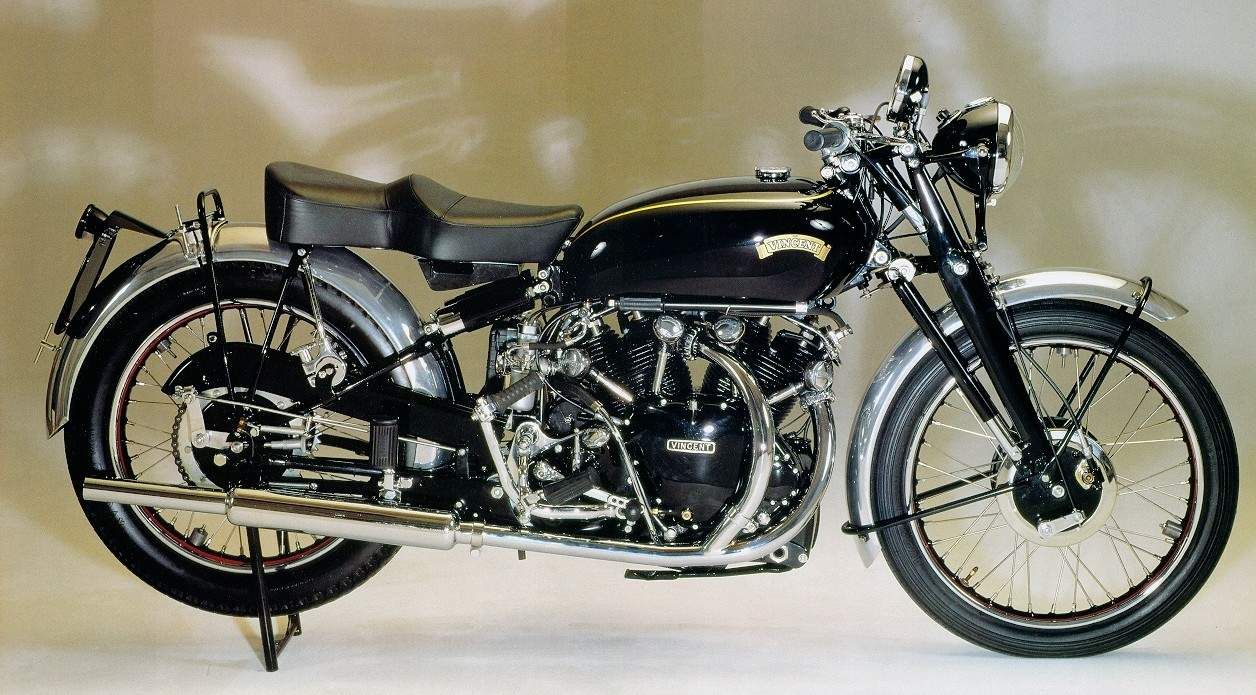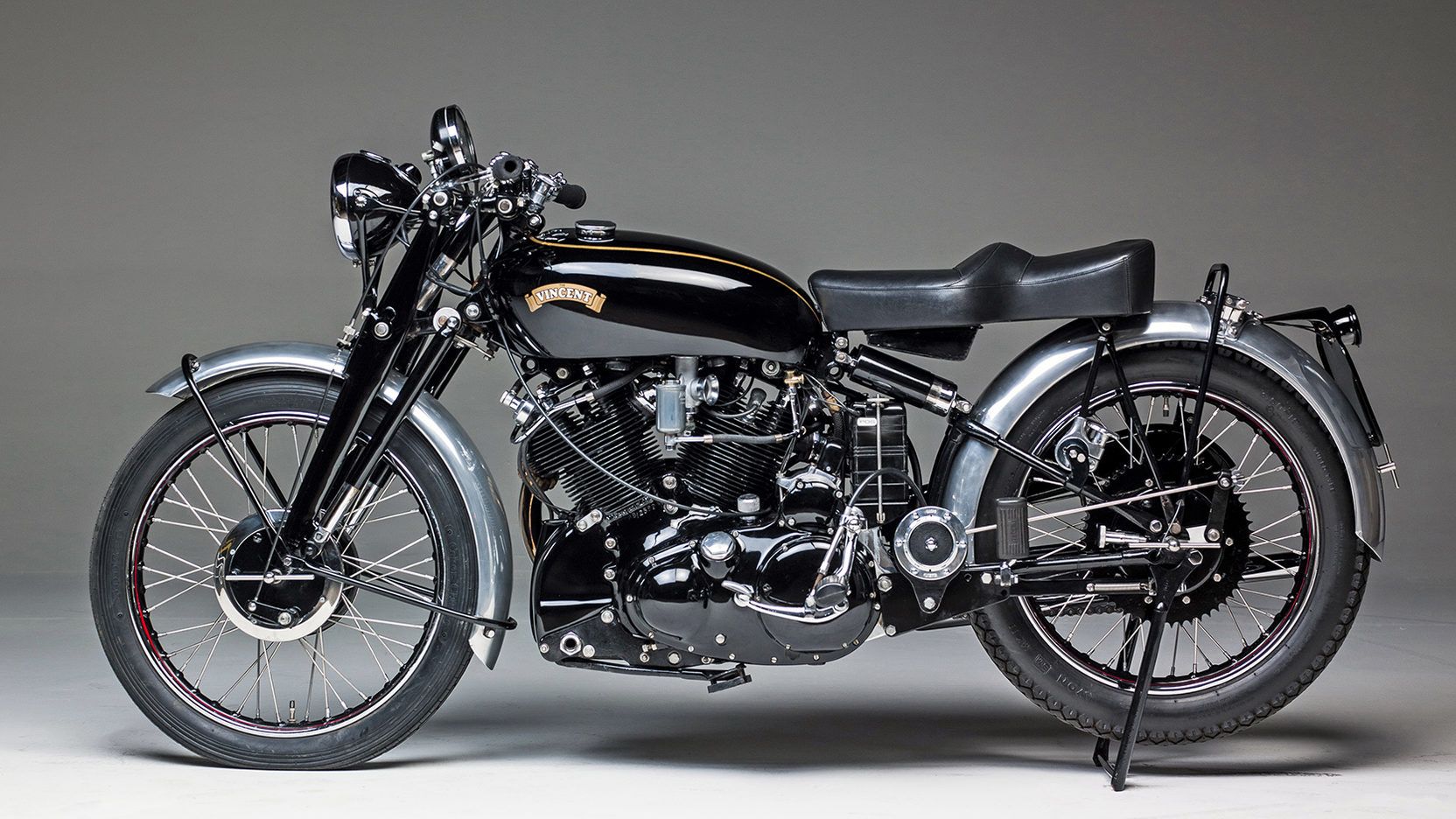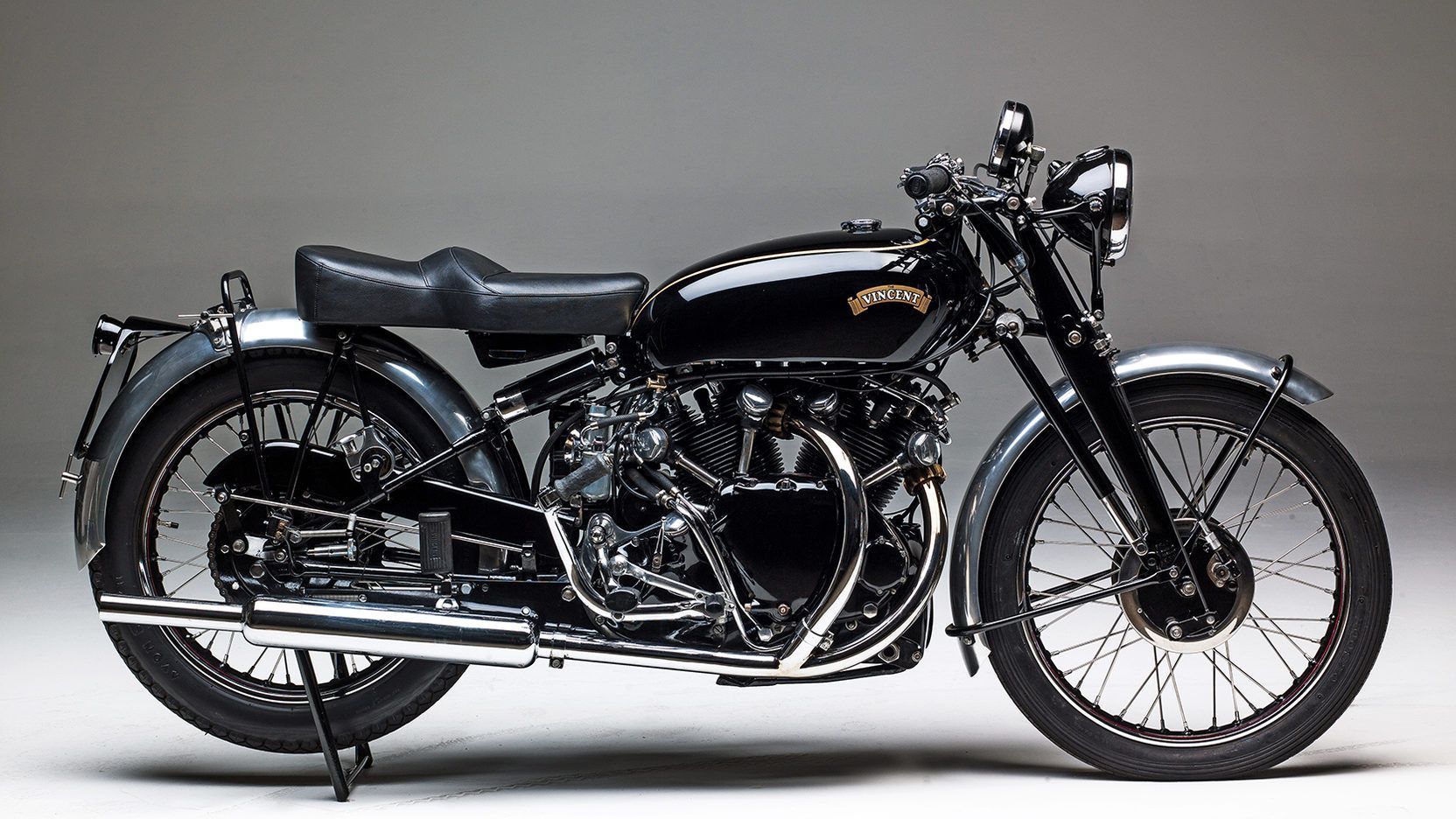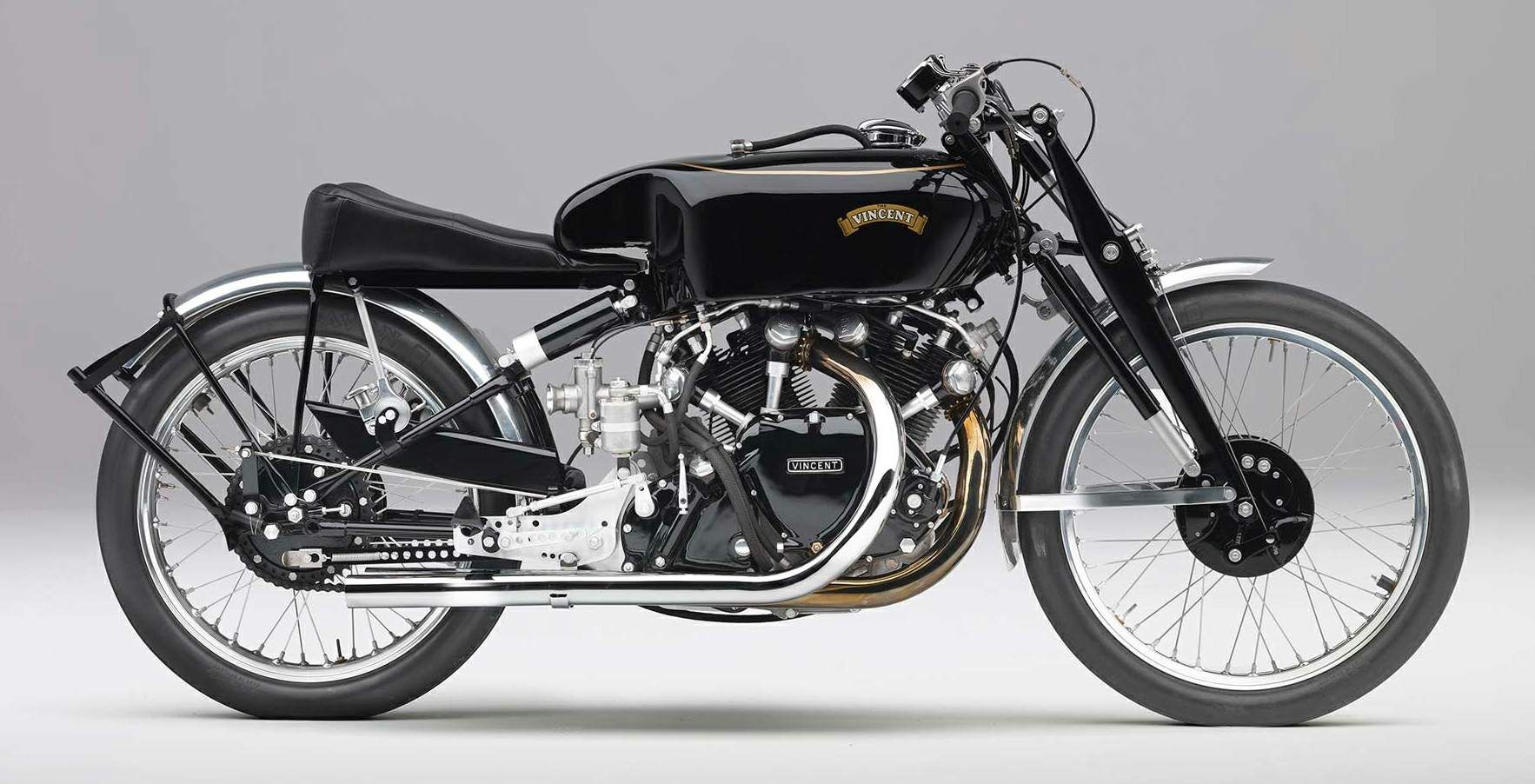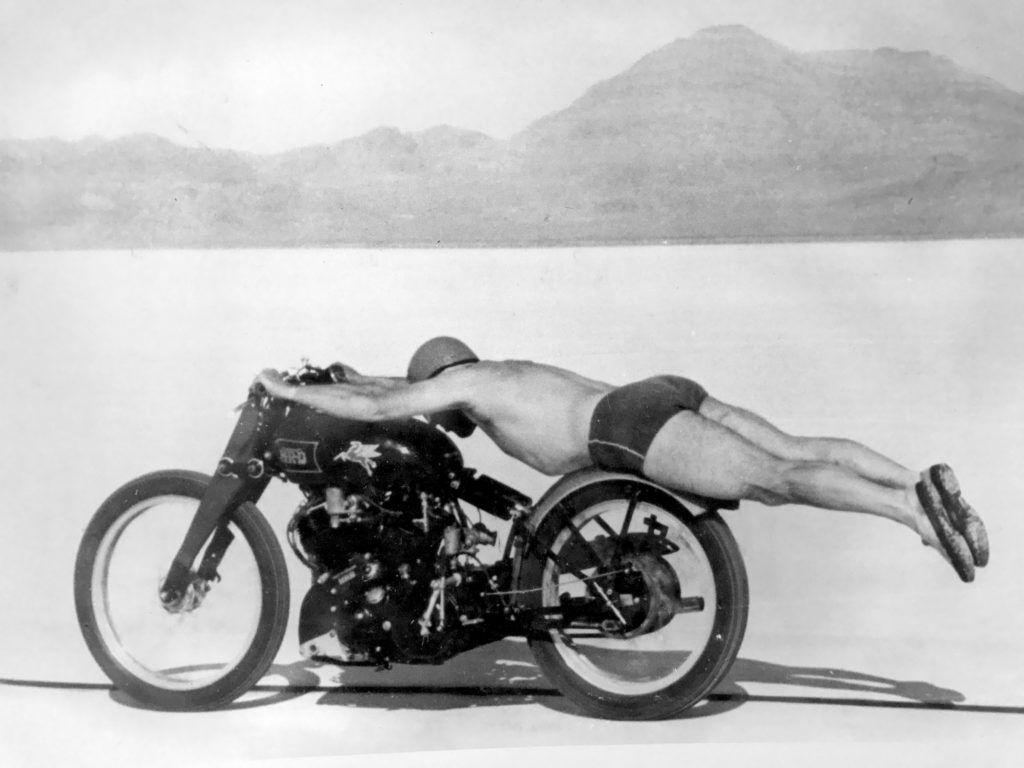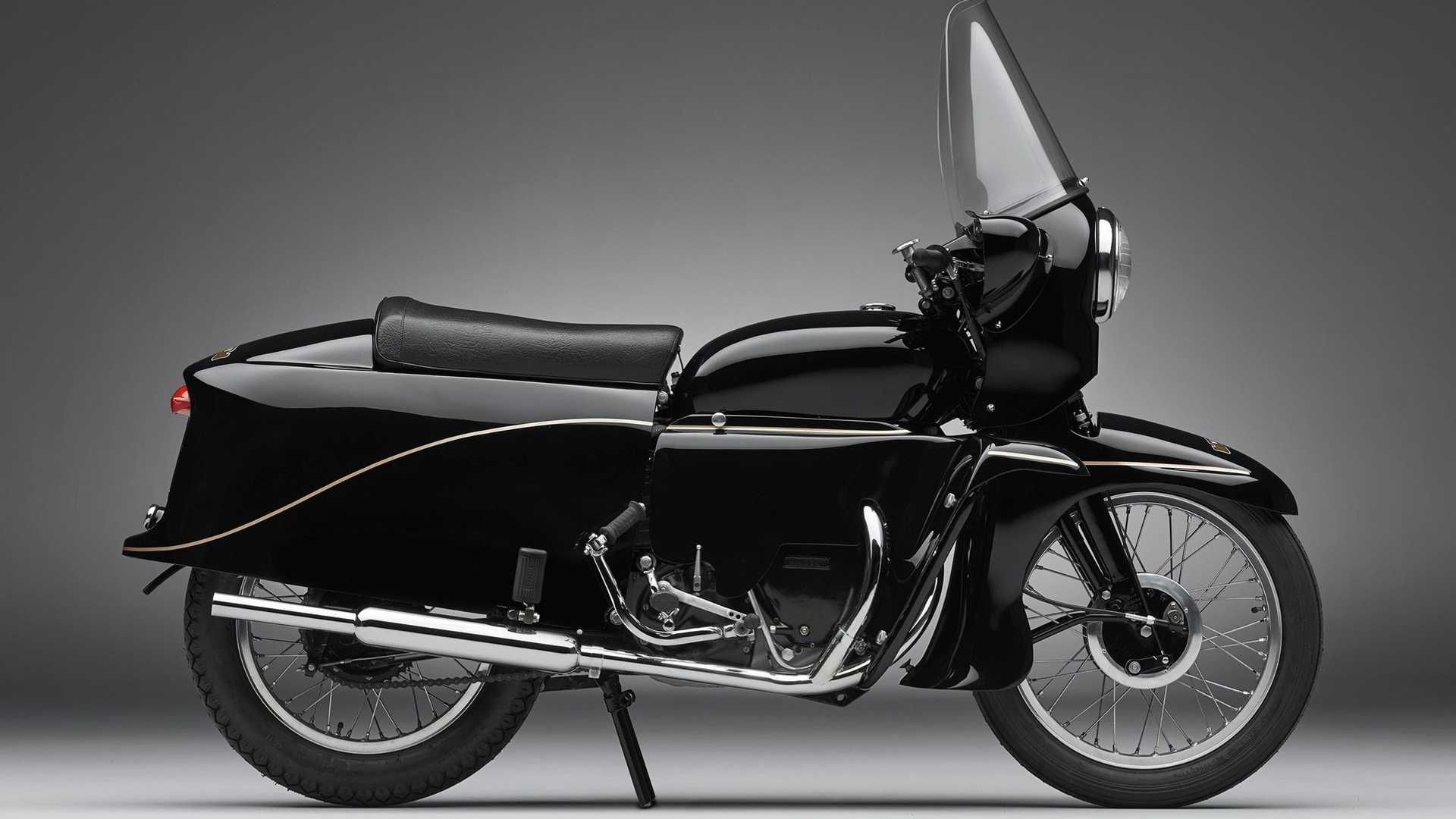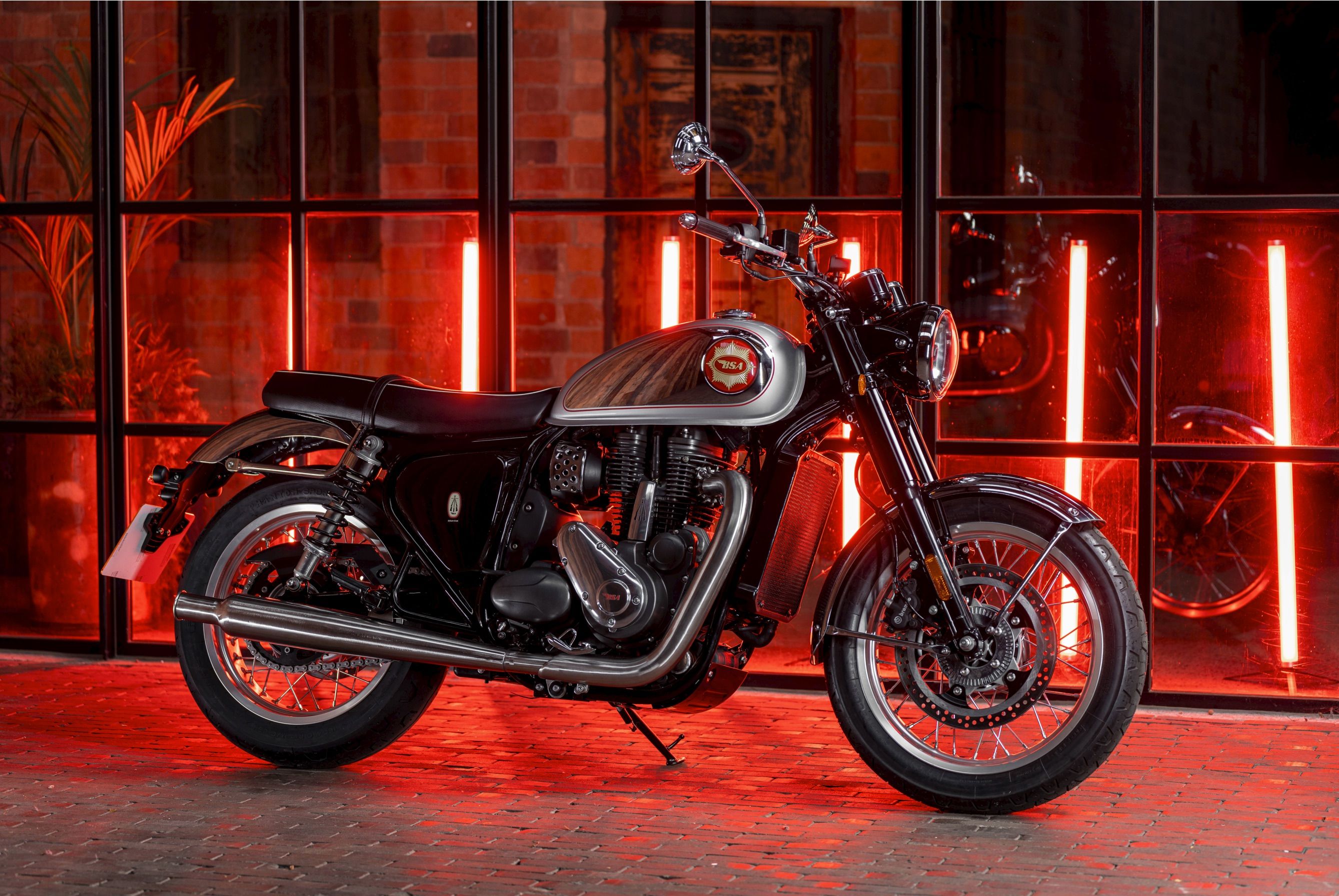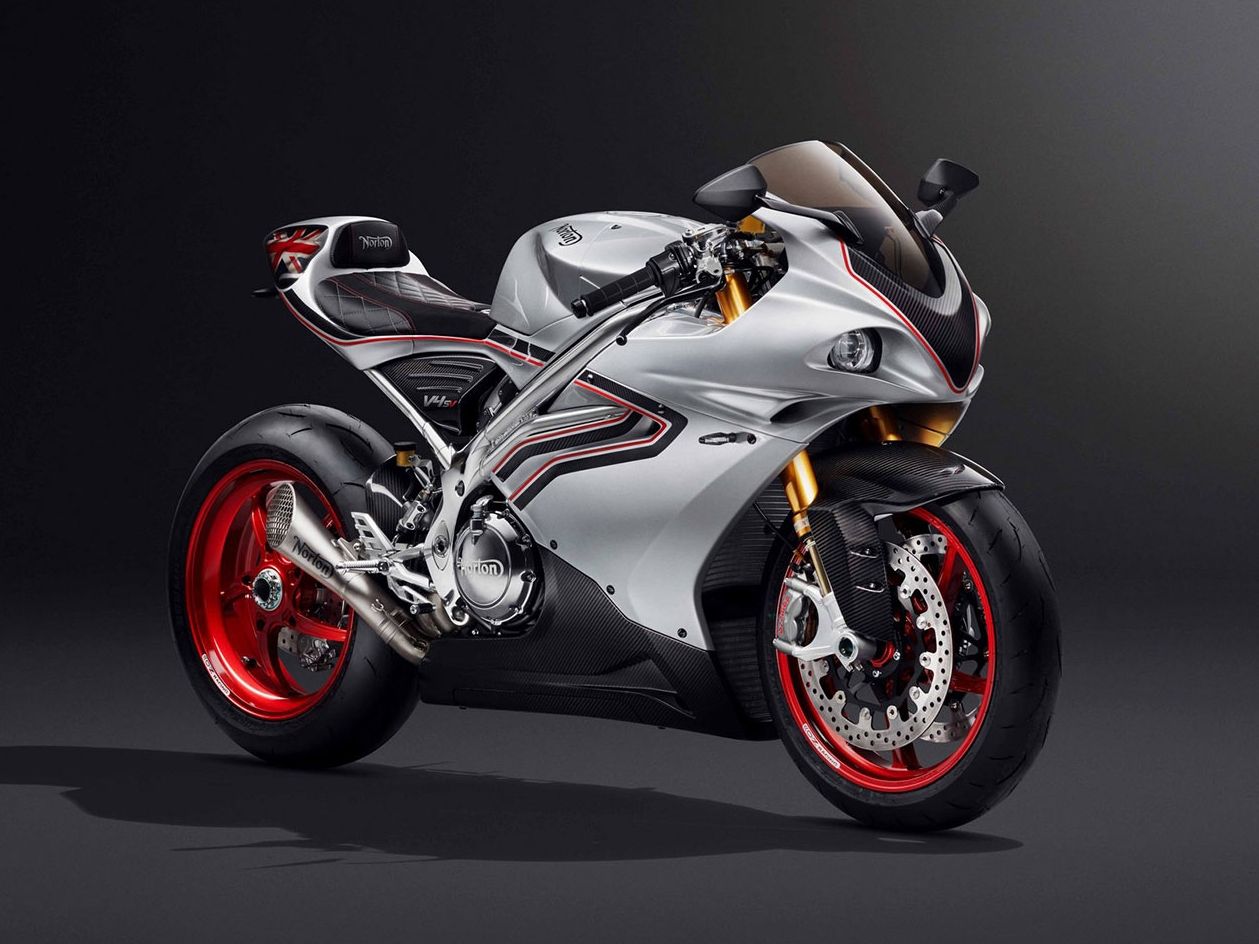Who would ever have envisaged the British Motorcycle Industry being rescued by the Indians? Royal Enfield is owned by the Indian conglomerate Eicher, Norton has been taken over by TVS, BSA has been revived by Mahindra, and now, the mighty Vincent name has been bought by Bajaj. Of the three, the Vincent name has a mystique about it, but, why is that? In order to understand, we have to look back through history.
The Beginnings
Philip Vincent designed his first motorcycle in 1925, at the age of 17 and he subsequently gave up his studies at Cambridge University to concentrate on building his first motorcycle. In 1928, he registered a patent for his own cantilevered, twin-spring rear suspension (don’t forget that, at this time, rear suspension was all but unknown for motorcycles and certainly not swing-arm suspension). His first bike utilized this rear suspension attached to a frame of his own design, the rest of the components being proprietary; 350cc M.A.G. engine, Royal Enfield brakes, and Webb forks.
In the meantime, Howard R Davies, founder of HRD motorcycles, and winner of the 1924 Isle of Man Senior TT, was in financial difficulties. Phil Vincent, having formed his own company with a family friend, bought the trademark, goodwill, and remaining spares of the HRD company in 1928 for £450.
The First HRD-Vincent
The first HRD-Vincent appeared in 1928, being fitted with either J.A.P. or Rudge single-cylinder engines in a chassis designed by Vincent. The motorcycles were well made and sold reasonably well. A disastrous 1934 Isle of Man TT, where all three bikes entered failed to finish due to engine problems, prompted Vincent, along with Australian engineer Phil Irving, who had joined the company in 1931, to design and build their own engines.
Birth Of A Legendary Engine
The first engine was a 499cc single-cylinder unit, called the Comet (the racing version was called the Meteor). Legend has it that Phil Irving saw two engineers’ drawings of the engine laid one on top of the other, so that the barrels formed a ‘V’. He set this out on a drawing board as a v-twin engine in a frame Vincents had made for a record attempt by Eric Fernihough, who no longer needed it. When Vincent saw the design, he was immediately enthusiastic and, in a matter of weeks, the first 1000cc, V-twin engine was complete, using Meteor barrels and cylinder heads on a new crankcase. It produced 45bhp and gave a top speed of 110mph (180km/h), very good figures for the day.
Mix Of Old And New Suspension Ideas
The V-twin-engined Series A Rapide appeared in 1936, using the by-now famous cantilevered rear suspension design of Phil Vincent’s own design. Strangely, however, both Irving and Vincent preferred to use girder forks rather than the latest innovation of telescopic forks, considering them inferior at that point in their development.
Design Philosophy
Post-Second World War 2, the substantially redesigned Series B Rapide brought forth one of Vincent’s most famous proclamations on frame design. With the engine and gearbox now being in unit, i.e. crankcase and gearbox casing as one casting as opposed to two separate cases joined by plates, the engine could be used as a stressed member. This led to the most startling aspect of the new model, summarised by Vincent thus;
"What isn’t present takes up no space, cannot bend, and weighs nothing - so eliminate the frame tubes."
A steel box-section backbone - that doubled as the oil tank - was bolted across the top of both cylinder heads, with the headstock tube at one end and the top of the spring/shock units of the cantilevered rear subframe mounted at the other end, the bottom being pivoted on the back of the gearbox.
Innovation
Phil Vincent was way ahead of his time in some of his thinking. His motorcycles featured quickly detachable wheels - front and back - which required no tools to remove.
With this technology, wheel changes were much simpler, and different size rear drive sprockets could be fitted for quick final drive ratio changes. The foot-brake and gear levers were adjustable to suit the individual rider and the rear mudguard was hinged to facilitate rear wheel removal.
It wasn’t all forward-thinking, however, for girder forks were retained; both Vincent and Irving continued to consider telescopic forks still not stiff enough.
The Vincent Black Shadow
Now, there’s a name to evoke images of speed! 1948 saw the Series C models in either Rapide or the new Black Shadow form. The Black Shadow was recognizable by the black-coated engine cases. 55 horses pushed the bike to a 125mph top speed. If that sounds tame by today’s standards, remember that the Triumph Bonneville, proudly named the T120 in recognition of its 120mph top speed, was still 11 years away! The Vincent was one quick road bike for its day.
The Black Lightning And The Most Famous Photograph In Motorcycling
Most desirable of all Vincents was the Black Lightning racing model. Everything that could be was re-made in aluminum, shaving a significant 38 kgs (83.8 pounds) from the overall weight. It was with a Black Lightning that racer Rollie Free set a U.S. speed record of 150.313mph at the Bonneville Salt Flats in Utah in 1948. Nothing particularly amazing about that, you might think, but the resulting photograph of the attempt, showing Free lying prone on the bike wearing nothing but a pair of swimming trunks, a bathing cap, and sneakers is often cited as the most famous motorcycling photograph of all time.
Typical of the practical-thinking-and-the-risks-be-damned attitude of the time, Free’s leather race suit had started tearing with the wind pressure and the aerodynamic drag prevented him from reaching the magical 150mph mark. Solution; don’t wear the leathers but keep just on the right side of Utah’s decency laws! Without that restriction, might he have raced completely naked?
The Black Prince and Factory Closure
In 1954, the Series D models were introduced with detailed changes. Most notorious, however, were the Black Knight and Black Prince models, based respectively on the Rapide and Black Shadow and featuring fully-enclosing bodywork to aid streamlining and rider comfort. They were, by Vincent standards, odd-looking machines and were poorly received by the public. We now see them as being way ahead of their time but, in the 1950s, they were a too-far step forward.
The writing was on the wall for the company. Hand-built and expensive, only 11,000 motorcycles were built in the 10 years since the end of the war. The post-war motorcycling boom, providing transport for many, was over, the rise of cheap motoring reflecting shifting transport needs. In December 1955, Vincent Motorcycles finally closed its doors.
2022 and Beyond
Royal Enfield actually never went out of production: that just moved to India once the British factory had closed. Norton, BSA, and now Vincent are Indian-owned. Triumph has close ties with Bajaj and KTM also works closely with that company. Brough Superior is the only resurrected manufacturer that has no ties to India! The British motorcycle industry is being re-formed one manufacturer at a time.
With the Vincent name, Bajaj could go one of two routes: retro models in the image of the original Vincents, like BSA, or a completely modern take, as has happened with the Norton V4 and Brough Superior. It could also develop a Vincent factory in the UK, much as Mahindra has done for its new BSA concern.
Of course, Great Britain isn’t the only country with a significant motorcycle manufacturing history. Between the beginning of the 20th Century and the Great Depression, there were literally hundreds of American motorcycle manufacturers, some of which lasted a matter of a few months, and some of which had much longer and distinguished histories.
Bajaj also owns the rights to the Excelsior-Henderson name and who wouldn’t want to see that grand old name resurrected along with a few others? A brand new Flying Merkel? Ivor Johnson? Thor? How infinitely cool would that be?
FAQ
Q: How Much is A Vincent Motorcycle Worth?
Because they were produced in relatively small numbers (estimates put the entire Vincent production at just 10,000 bikes in its entire history), they are rare and desirable today. At auction, a Black Shadow recently fetched almost $1 million.
Q: Are Vincent Motorcycles Still Made?
Not at present. Production ended in 1955, but Indian manufacturer Bajaj has bought the rights to the name and it is likely that we will see a new Vincent in a few years.
Q: Where Are Vincent Motorcycles Made?
The Vincent factory used to be in Stevenage, Hertfordshire, UK. With the rights to the name now passing to Indian company Bajaj, they could be built in India or a new factory in the UK could be built, as Mahindra did for the recently revived BSA brand.
Q: How Much is A Vincent Motorcycle Worth?
Because they were produced in relatively small numbers (estimates put the entire Vincent production at just 10,000 bikes in its entire history), they are rare and desirable today. At auction, a Black Shadow recently fetched almost $1 million.
Q: Are Vincent Motorcycles Still Made?
Not at present. Production ended in 1955, but Indian manufacturer Bajaj has bought the rights to the name and it is likely that we will see a new Vincent in a few years.
Q: Where Are Vincent Motorcycles Made?
The Vincent factory used to be in Stevenage, Hertfordshire, UK. With the rights to the name now passing to Indian company Bajaj, they could be built in India or a new factory in the UK could be built, as Mahindra did for the recently revived BSA brand.

